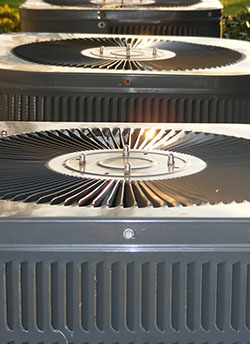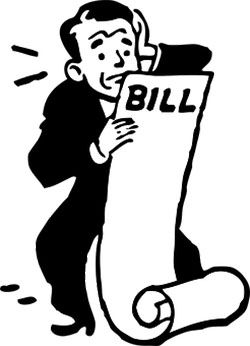What the APS Rate Increase Means for You
 13 September 2017
13 September 2017 

What the APS Rate Increase Means for You:
Answers to 5 Key Questions About What You May Pay
Homeowners have been calling us lately about the recent vote by state regulators to allow the Arizona Public Service Co. (APS) to raise rates.
 Although it will take a while to see what happens, some increases have already started as of August 19th. Rates are changing for both summer and winter, though many residents are most concerned with the summer rates when bills can be much higher due to air conditioner use.
Although it will take a while to see what happens, some increases have already started as of August 19th. Rates are changing for both summer and winter, though many residents are most concerned with the summer rates when bills can be much higher due to air conditioner use.
Although APS is the largest utility in Arizona, the changes don't affect residents in the Salt River Project and many other smaller utilities, although their rates have risen as well in recent years.
But these newest changes at APS are somewhat confusing, so we asked Steve and Gina Koepp of Advanced Home Systems of Phoenix, a company that helps homeowners reduce utility bills, to answer some questions. Here is what we learned:
1 | What are the important rate changes under the new APS system?
For years, of course, we advised homeowners to get off their utility's standard rate plan which meant you pay a high kWh (kilowatt hour) price 24 hours a day. This plan only worked for a single person in a home or apartment with 1,000 square feet or less in living space. Among the better plans was the APS time-of-use plan that charged higher rates (on-peak prices) from noon to 7 p.m. on weekdays. The goal of customers was to use electricity more during the hours when rates were low (off-peak prices) – not from noon to 7.
Now the hours for the lower off-peak pricing have changed. The APS plan that seems the most comparable to the old noon to 7 plan is called Saver Choice which has lower rates from 3 to 8 p.m.
That might not make much of a difference, because the number of off-peak hours has increased. But that new on-peak hour from 7 to 8 p.m. is probably when more of your family is home and you use more electricity.
As usual, APS will charge off-peak rates on weekends and holidays and is adding four more holidays to off-peak rates: Veterans Day, Presidents Day, Martin Luther King's birthday and Cesar Chavez's birthday.
2 | Which new rate plan should you choose?
If you had the noon to 7 plan previously, Saver Choice seems the most similar to your previous plan. Almost no one would benefit from the basic standard plans designed for those in very small homes. Other options are Saver Choice Plus and Saver Choice Max. These rates have a demand-based cost; however, they also have a much lower kWh. Demand is free during off-peak times so if you can manage your demand during on-peak times you will have a much lower kWh cost on- and off-peak.
3 | When should you change to the new plan?
 Although you have until May 1, 2018, to pick a plan, some increases took effect Aug. 19. If you do not choose by then, APS will put you on the rate they think is best for you.
Although you have until May 1, 2018, to pick a plan, some increases took effect Aug. 19. If you do not choose by then, APS will put you on the rate they think is best for you.
The transition changes made last month will be in place until you make your choice. But the description of these transition rates has left us a little confused about what your bills will be like until you choose a new plan.
If you move to the new Saver Choice plan by May 1, your summer rates will be 24.314 cents on-peak and 10.873 cents off-peak. That compares with 24.477 cents per kWh on-peak and 6.118 cents per kWh off-peak on your old noon to 7 plan. That's a huge percentage jump in the price of off-peak power and could cause many homeowners' monthly bills to jump considerably.
So, you might want to take some time to think about which plan you want and how it will suit your lifestyle. Now that temperatures could start cooling down, of course, you can worry less about your AC power bill for a while.
4 | Can you change plans if you don't like your first choice?
You can pick a plan and try it for a while. If you don't like it, you can change once more. But after that final choice, you must stay on the plan you choose for at least a year before changing again.
5 | Will the new rates and plans work with super-cooling, a system Steve Koepp drafted for homeowners to reduce summer bills for air conditioning?
As you may recall, super-cooling involves lowering the temperature on your thermostat to as cool as you can stand (68 to 74 degrees) at times of day when your utility charges you cheaper rates. This method cools everything in the house – the walls, furniture, rugs, dishes, clothes in the closet, etc. The cooling can be uncomfortable; so, homeowners generally put on a sweater during the day and used extra blankets in bed at night.

Then when the on-peak hours arrive, you raise the thermostat to the warmest possible level you can stand – maybe 78 or 79. By then, your house is so cool, your air conditioner doesn't come back on for hours. The result has been major savings for many homeowners.
Right now, however, we're in the process of discussing what adjustments may need to be made in super-cooling under the new rate schedule in order to save on your power bill.
For more information, check out the comparison of new summer rates that was put together by Advanced Home Systems of Phoenix. You can also look at the APS chart that compares resident rates for summer and winter in addition to the APS Rate Sheet that might not be so confusing.
###
Photo Credits:
RELATED CONTENT:
- Blog:Are You Missing Real Good Deals from Our Utility Companies?
- Blog: Lock In Your Utility Rate For 20 Years By Going Solar Before APS Rate Case In June 2017
- DIY Q&A: Can I Get My Electric Bill To Zero Using Solar Heat?
- DIY Q&A: How Much Does A Solar Water Heater Cost?
Print this page
recent post
- Duck, Duck, Duct! How Often Should Ductwork Be Cleaned?
- Vinyl vs. Fiberglass Windows: Which Is The Better Choice Of Replacement Window?
- We May Be The Grand Canyon State, But The Rocky Mountains Are Important For Arizona
- Welcome to Arizona! Things A Newbie to Arizona Should Know
- The Pros & Cons of Buying A Flipped House
- Getting In On The Ground Floor
- Why It’s More Critical Than Ever To Get Your AC Serviced Before Summer
- The Reality of Remodeling
- What To Look For When Comparing Your Roofing Quotes
- What To Expect When Buying New Windows & Doors
